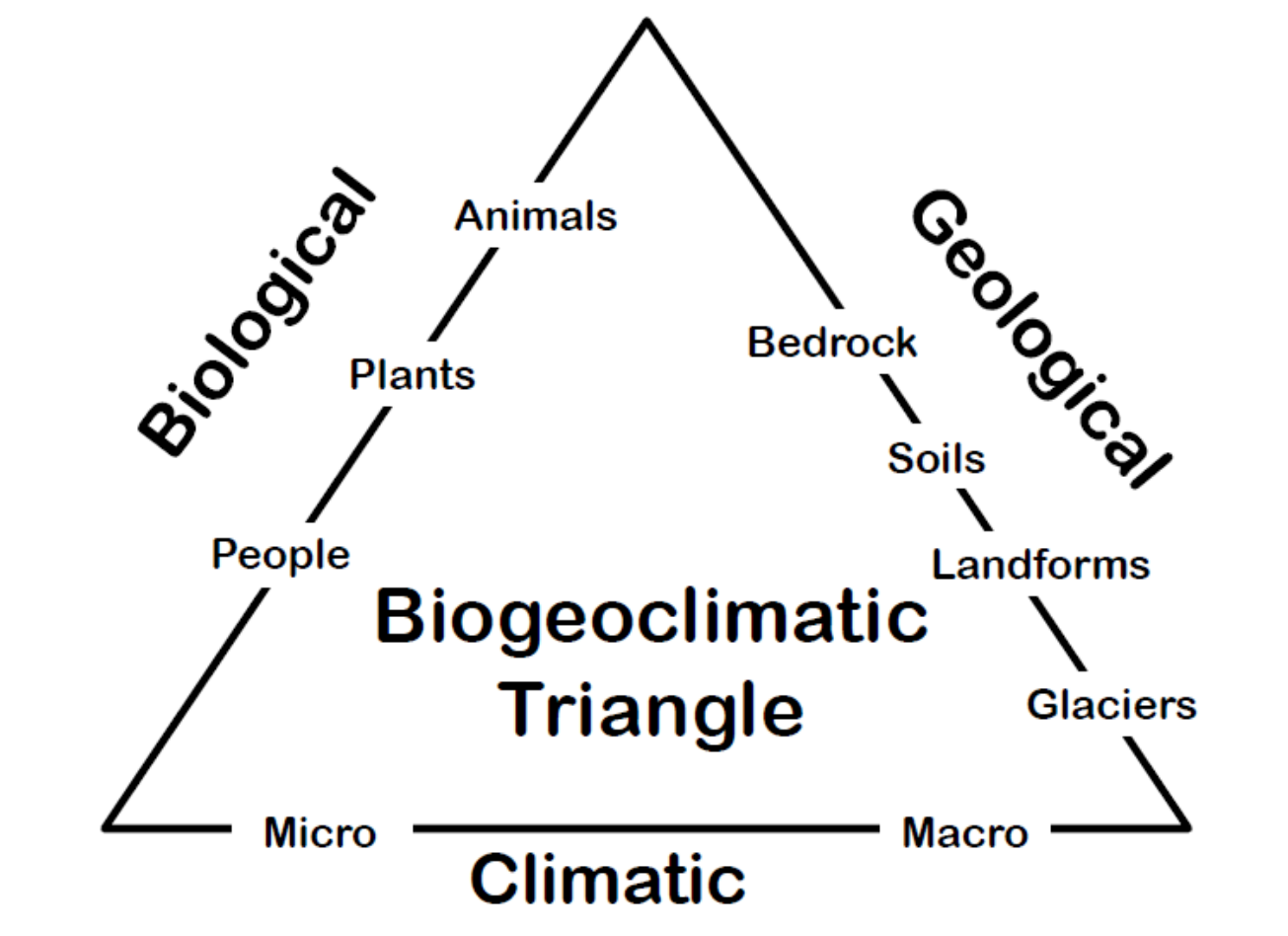Biogeoclimatic Triangle
Ecosystem classification is the system of grouping ecosystems based on shared elements;
in most cases plants are used as the defining characters of ecosystem classification systems.
However, plants comprise only one element in the broad array of factors that come together
to make an ecosystem. Phytosociology is the study of the characteristics, classification,
relationships, and distribution of plant communities. Phytosociological techniques have
been used to define ecosystem units in British Columbia and elsewhere in the world. In
British Columbia, modified Braun-Blanquet methods (Mueller-Dombois and Ellenberg
1974) have been used to define a biogeoclimatic ecosystem classification system (BEC
system) that has been used to classify the diverse ecosystems of the Province (Pojar et al.
1987). This system is based on the three ecosystem elements that are considered most
important in determining the distribution of the plants and animals that make up the
ecosystems of the Province. The BEC elements can be used to describe the things that are
important in making ecosystems function or conversely those elements that are important
to consider when restoring ecosystems. These can be arranged as the sides of a triangle
(Figure 2-1) with each side representing one of the three elements.
Figure 2-1. Biogeoclimatic triangle showing the elements that are needed for effective restoration planning. Restoration can happen without people.
Understanding how each of the three BEC elements contributes to how ecosystems arrange themselves on the land provides a foundation for designing recovery systems for restored ecosystems. For instance, soils that are basic (high pH) will support a different assemblage of plants and animals than soils that are acidic (low pH). Different bedrock geology produces soils that are either basic or acidic. The limestone of the Rocky Mountains
supports a different alpine flora than the alpine flora of the Selkirk or Purcell Mountains with an igneous/metamorphic geology right next door (Polster 1977). Similarly, the vegetation growing in the lee of the Coast Range Mountains is completely different than
the vegetation growing on the windward side of the mountains. The following sections describe how these three BEC elements influence the natural vegetation and in turn influence the restoration treatments.


